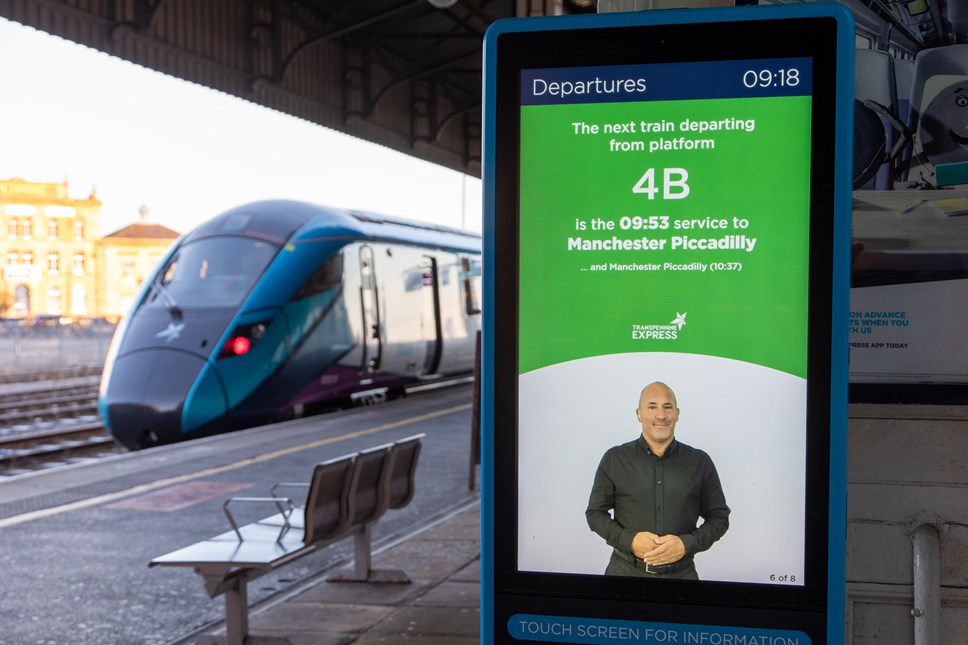The future of accessible air travel: innovations that will change the industry
Air travel has long been a gateway to global connection, offering convenience and adventure to business and leisure travellers alike. For those of us who are disabled, however, it can be a complex, undignified and frustrating experience. From navigating crowded terminals to dealing with inaccessible aircraft, attending a conference or escaping for some winter sun can pose its challenges. But, change is on the horizon. A variety of innovations, ranging from new aircraft designs to technology-driven solutions, are emerging to make air travel more inclusive and accessible for all.
Here’s my pick of potential innovations that could create real and positive change for millions of people every year.

Customisable sensory rooms and quiet areas
Many airport passengers and staff members benefit from the ability to decompress in a designated space that suits their requirements, but what if the previous user leaves the room set up for a differing range of requirements and preferences? Soon, with technological adaptation, more personalised, responsive environments will be available to automatically adjust to the next user’s needs.
AI could be used to monitor and adjust the sensory input within the room in real-time. For example, analysing a user’s reaction to room lighting could result in a change in brightness, colour and/or warmth. Biometric data could be used to recognise a change in heart rate, breathing patterns or facial expressions to further adjust the environment, such as softening sounds or introducing calming visuals. Frequent users of a space or service could also store their personal profiles, with learned preferences over time resulting in an AI-driven tailored experience.
Inclusive in-flight entertainment
An innovation that could be implemented very soon is improved entertainment accessibility is taking to the skies with the Thales InFlyt Experience. The Crystal Cabin Award Association recognised Thales’ suite of in-flight entertainment (IFE) accessibility solutions in October 2024 within the Best Customer Journey Experience category.
Thales’ accessible user interface is the most progressive in the industry featuring a familiar structure and flow, with intuitive gesture controls mirroring how blind and partially sighted users control their own devices, therefore granting equitable access to the same in-flight amenities and services. For D/deaf and hard of hearing users, an InVision avatar can utilise multiple sign languages to assist with cabin safety announcements as well as on-demand video interpretation. Captions are also available as standard. Soon, information will be delivered in multiple accessible formats to ensure that safety and comfort go hand-in-hand.

Pre-visit comfort
The aviation journey for those of us who require assistance commences long before we enter the airport; assistance needs to be booked, mobility equipment needs to be measured (and rules on batteries understood) and assistance teams need to be informed.
Creating added comfort, control and autonomy as part of this process is surely due to disabled passengers. Numerous pre-visit information and passenger assistance apps are in existence or development (shout out to Passenger Assistance and PRMAssist) but I’m excited to see a time in which this ‘pre-visit comfort’ becomes less about knowing that someone will successfully get you from A to B, and more about being able to log personal information and preferences, removing the need to re-justify an impairment or access requirement every five minutes, and normalising the perhaps all-too-often pit stop at the perfumes in duty free for a little holiday treat…

Technology as travel assistance
Technology can provide an equitable experience through the delivery of useful, real-time information. Take Network Rail’s recent innovations in providing BSL InVision on information screens in train stations as an example; something that could be invaluable if provided alongside FIDs within airports to communicate gate departures, delays and flight changes.
Never one to promote the replacement of a humanised service, I’m not sure how I feel about this next one. But, the role of ‘technology as assistant’, particularly in aviation, cannot be overlooked. Take Ara by StrapTech for example: receiving a special mention in TIME’s best Inventions of 2022, this wearable mobility aid employs a combination of LiDAR and ultrasonic sensors and is designed to provide real-time haptic feedback to blind and partially sighted users, enabling safe and autonomous navigation of built environments. Effectively, it is technology that could replace the trusty white cane and even the passenger assistance staff member.
One last thought from me: as trivial as it may sound, I’m also very much enjoying the fact that I no longer have to take my laptop and makeup out of my hand luggage when I travel; there’s nothing quite like pushing along as a wheelchair user hoping you can keep up the stuff-on-knee balancing act for that bit longer!
What innovations do you think will change the game in aviation, now and in the future? I’m looking forward to finding out more at this year’s Passenger Terminal Expo in Madrid!
Written by:

Emily Yates
Head of Accessibility and Inclusive Design
Emily has worked on numerous accessibility initiatives for national and international organisations, including the Olympic and Paralympic Games in Rio de Janeiro and Heathrow Airport. Emily has also worked with the Council of Europe and sat on equality boards advising premier league football clubs.